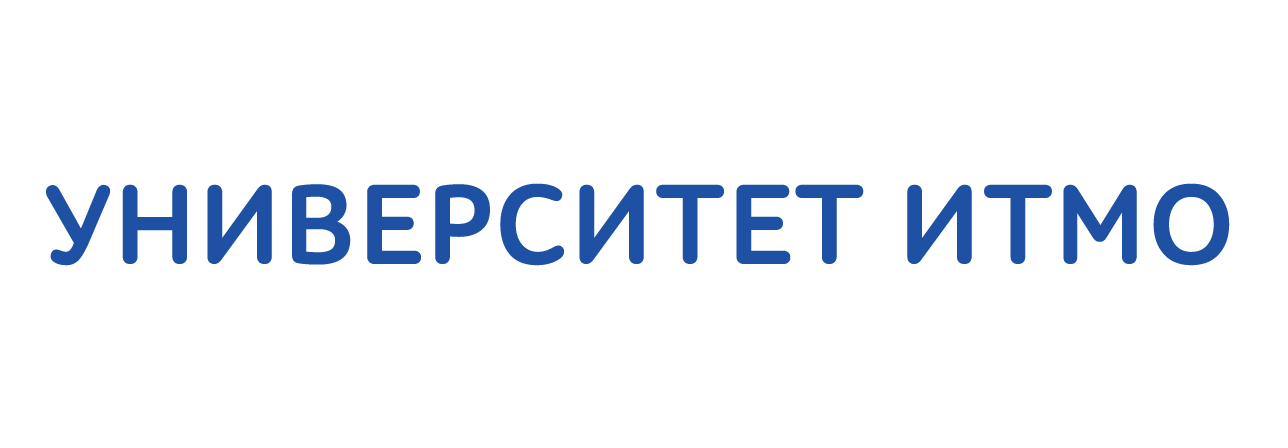Меню
Публикации
2025
2024
2023
2022
2021
2020
2019
2018
2017
2016
2015
2014
2013
2012
2011
2010
2009
2008
2007
2006
2005
2004
2003
2002
2001
Главный редактор

НИКИФОРОВ
Владимир Олегович
д.т.н., профессор
Партнеры
doi: 10.17586/2226-1494-2023-23-2-390-402
УДК 621.313
Сравнительный анализ методов управления вентильно-индукторной электрической машиной
Читать статью полностью
Язык статьи - русский
Ссылка для цитирования:
Аннотация
Ссылка для цитирования:
Демидова Г.Л., Дербиков Я.Д., Петриков Ф.С., Лукичев Д.В., Стжелецки Р., Анучин А.С. Сравнительный анализ методов управления вентильно-индукторной электрической машиной // Научно-технический вестник информационных технологий, механики и оптики. 2023. Т. 23, № 2. С. 390–402. doi: 10.17586/2226-1494-2023-23-2-390-402
Аннотация
Предмет исследования. Развитие микропроцессорной техники и силовой электроники позволило создавать недорогие и эффективные системы управления различными электромеханическими объектами, которые ранее широко не использовались из-за сложности управления. К таким устройствам можно отнести вентильно-индукторные электрические машины. Данные машины широко применяются в различных практических разработках, например, в тяговом электроприводе, в электроприводе нефтегазовых буровых установок и других направлениях. Вентильно-индукторная электрическая машина, несмотря на свои явные преимущества, является существенно нелинейным объектом, методы управления которым требуют формализации и группировки. Метод. Рассмотрены конструктивные и функциональные особенности вентильно-индукторных электрических машин, а также показаны основные методы их управления. Выполнен сравнительный анализ наиболее известных способов управления. Основные результаты. Приведены основные классические методы управления вентильно-индукторной электрической машиной: применение релейного регулятора тока с ограничением, метод регулирования углов включения/выключения и управление напряжением звена постоянного тока. Продемонстрированы переходные процессы в системе электропривода при использовании рассматриваемых методов. Показано, что путем регулирования углов включения/выключения получена возможность снижения коэффициента осцилляции вращающего момента. Практическая значимость. Выявленные особенности рассмотренных методов позволяют упростить и сократить время разработки эффективной системы управления вентильно-индукторной электрической машиной, а также уменьшить пульсации вращающего момента.
Ключевые слова: вентильно-индукторный двигатель, система управления, угол включения, управление скоростью, имитационное моделирование
Список литературы
Список литературы
1. Abdalmagid M., Sayed E., Bakr M.H., Emadi A. Geometry and topology optimization of switched reluctance machines: A review // IEEE Access. 2022. V. 10. P. 5141–5170. https://doi.org/10.1109/ACCESS.2022.3140440
2. Prasad N., Jain S., Gupta S. Review of linear switched reluctance motor designs for linear propulsion applications // CES Transactions on Electrical Machines and Systems. 2022. V. 6. N 2. P. 179–187. https://doi.org/10.30941/CESTEMS.2022.00024
3. Mohanraj D., Gopalakrishnan J., Chokkalingam B., Mihet-Popa L. Critical aspects of electric motor drive controllers and mitigation of torque ripple—review // IEEE Access. 2022. V. 10. P. 73635–73674. https://doi.org/10.1109/ACCESS.2022.3187515
4. Xia Z., Bilgin B., Nalakath S., Emadi A. A new torque sharing function method for switched reluctance machines with lower current tracking error // IEEE Transactions on Industrial Electronics. 2021. V. 68. N 11. P. 10612–10622. https://doi.org/10.1109/TIE.2020.3037987
5. Deng X., Mecrow B. A direct energy control technique for torque ripple and DC-link voltage ripple reduction in switched reluctance drive systems // Proc. of the 2020 International Conference on Electrical Machines (ICEM). 2020. P. 2035–2040. https://doi.org/10.1109/ICEM49940.2020.9270705
6. Nandu Krishnan A.M., Monish M., Vivek R.S. Direct torque control based on inductance profile for four phase switched reluctance motor // Proc. of the 2020 International Conference on Power Electronics and Renewable Energy Applications (PEREA). 2020. P. 1–5. https://doi.org/10.1109/PEREA51218.2020.9339789
7. Li Y., Tang Y., Chang J., Li A. Continuous sliding mode control and simulation of SRM // Proc. of the IEEE 10th International Conference on Cognitive Informatics and Cognitive Computing (ICCI-CC'11). 2011. P. 314–317. https://doi.org/10.1109/COGINF.2011.6016158
8. Sun X., Wu J., Lei G., Guo Y., Zhu J. Torque ripple reduction of SRM drive using improved direct torque control with sliding mode controller and observer // IEEE Transactions on Industrial Electronics. 2021. V. 68. N 10. P. 9334–9345. https://doi.org/10.1109/TIE.2020.3020026
9. Cheng Y., Li P. Research on switched reluctance motor speed control system with variable universe fuzzy PID // Proc. of the 2020 IEEE 4th Information Technology, Networking, Electronic and Automation Control Conference (ITNEC). 2020. P. 2285–2289. https://doi.org/10.1109/ITNEC48623.2020.9084650
10. Sahoo N.C., Panda S.K., Dash P.K. A current modulation scheme for direct torque control of switched reluctance motor using fuzzy logic // Mechatronics. 2000. V. 10. N 3. P. 353–370. https://doi.org/10.1016/S0957-4158(99)00039-2
11. Rahman K.M., Gopalakrishnan S., Fahimi B., Velayutham Rajarathnam A., Ehsani M. Optimized torque control of switched reluctance motor at all operational regimes using neural network // IEEE Transactions on Industry Applications. 2001. V. 37. N 3. P. 904–913. https://doi.org/10.1109/28.924774
12. Han L., Xu A., Zhu J., Zhang W. Torque observer of SRM based on BP neural network optimized by bat algorithm // Proc. of the 2019 22nd International Conference on Electrical Machines and Systems (ICEMS). 2019. P. 1–6. https://doi.org/10.1109/ICEMS.2019.8921967
13. Fang G., Ye J., Xiao D., Xia Z., Emadi A. Low-ripple continuous control set model predictive torque control for switched reluctance machines based on equivalent linear SRM model // IEEE Transactions on Industrial Electronics. 2022. V. 69. N 12. P. 12480–12495. https://doi.org/10.1109/TIE.2021.3130344
14. Rodriguez J., Garcia C., Mora A., Flores-Bahamonde F., Acuna P., Novak M., Zhang Y., Tarisciotti L., Davari S.A., Zhang Z., Wang F., Norambuena M., Dragicevic T., Blaabjerg F., Geyer T., Kennel R., Khaburi D.A., Abdelrahem M., Zhang Z., Mijatovic N., Aguilera R.P. Latest Advances of model predictive control in electrical drives–Part I: Basic concepts and advanced strategies // IEEE Transactions on Power Electronics. 2022. V. 37. N 4. P. 3927–3942. https://doi.org/10.1109/TPEL.2021.3121532
15. Anuchin A., Demidova G.L., Hao C., Zharkov A., Bogdanov A., Šmídl V. Continuous control set model predictive control of a switch reluctance drive using lookup tables // Energies. 2020. V. 13. N 13. P. 3317. https://doi.org/10.3390/en13133317
16. Cheshmehbeigi H.M., Karami E. Maximum output torque control in improved flux path homopolar brushless DC motor with axillary field by using optimal control of turn-on and turn-off angles in variable speed applications // IEEE Journal of Emerging and Selected Topics in Power Electronics. 2018. V. 6. N 4. P. 1722–1731. https://doi.org/10.1109/JESTPE.2018.2850349
17. Shin S., Kawagoe N., Kosaka T., Matsui N. Study on commutation control method for reducing noise and vibration in SRM // IEEE Transactions on Industry Applications. 2018. V. 54. N 5. P. 4415–4424. https://doi.org/10.1109/TIA.2018.2831173
18. Шевкунова А.В. Совершенствование проектирования активной части вентильно-индукторной машины: диссертация на соискание ученой степени кандидата технических наук: 05.09.01. Ростов-на-Дону, 2018. 150 с.
19. Алямкин Д.И. Разработка и исследование двухфазного вентильно-индукторного электропривода насосов горячего водоснабжения: диссертация на соискание ученой степени кандидата технических наук. М., 2012. 229 с.
20. Бычков М.Г. Основы теории, управление и проектирование вентильно-индукторного электропривода: диссертация на соискание ученой степени доктора технических наук. М.: МЭИ, 1999. 382 с.
21. Красовский А.Б. Имитационные модели в теории и практике вентильно-индукторного электропривода: диссертация на соискание ученой степени доктора технических наук: 05.09.03. М., 2003. 321 с.
22. Qiao D., Huang C., Cai M. The design of flux linkage measurement for switched reluctance motor // Journal of Physics: Conference Series. 2019. V. 1176. P. 052036. https://doi.org/10.1088/1742-6596/1176/5/052036
23. Barnes M., Pollock C. Power electronic converters for switched reluctance drives // IEEE Transactions on Power Electronics. 1998. V. 13. N 6. P. 1100–1111. https://doi.org/10.1109/63.728337
24. Mahmoud S.M., El-Sherif M.Z., Abdel-Aliem E.S. Studying different types of power converters fed switched reluctance motor // International Journal of Electronics and Electrical Engineering. 2013. V. 1. N 4. P. 281–290. https://doi.org/10.12720/ijeee.1.4.281-290
25. Pupadubsin R., Mecrow B.C., Widmer J.D., Steven A. Smooth voltage PWM for vibration and acoustic noise reduction in switched reluctance machines // IEEE Transactions on Energy Conversion. 2021. V. 36. N 3. P. 1578–1588. https://doi.org/10.1109/TEC.2020.3044917
26. Pillay P., Cai W. An investigation into vibration in switched reluctance motors // Conference Record of 1998 IEEE Industry Applications Conference. Thirty-Third IAS Annual Meeting (Cat. No.98CH36242). 1998. P. 341–350 https://doi.org/10.1109/ias.1998.732316
27. Красовский А.Б. Применение имитационного моделирования для исследования вентильно-индукторного электропривода // Электричество. 2003. № 3. С. 35–45.
28. Красовский А.Б., Кузнецов С.А., Трунин Ю.В. Моделирование магнитных характеристик вентильно-индукторных машин // Вестник МГТУ им. Н.Э. Баумана. Серия Естественные науки. 2007. № 4(27). С. 57–77.
29. Le-Huy H., Brunelle P. Design and implementation of a switched reluctance motor generic model for simulink simpowersystems // Modeling and simulation of electric machines, converters and systems; Electrimatics 2005. 2005. P. 1–35.
30. Le-Huy H., Brunelle P. A versatile nonlinear switched reluctance motor model in Simulink using realistic and analytical magnetization characteristics // Proc. of the 31st Annual Conference of IEEE Industrial Electronics Society (IECON). 2005. P. 1556–1561. https://doi.org/10.1109/iecon.2005.1569136
















